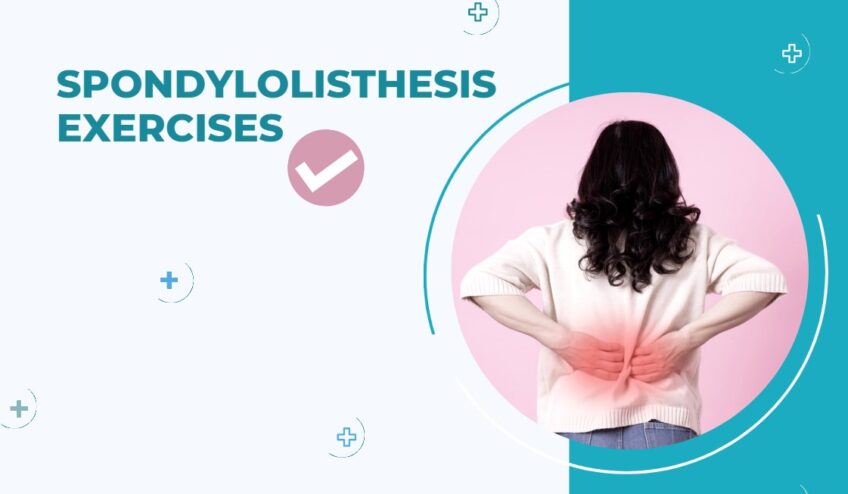Spondylolisthesis is a common spinal condition that occurs when one of the vertebrae in the lower back slips out of alignment, which can lead to pain and instability. It is important to understand which exercises and activities are safe, and which should be avoided, so as not to aggravate the vertebral slippage and create further problems.
In general, low-impact activities such as walking or swimming are usually recommended since they place minimal stress on the spine. Working with a physical therapist can help identify specific and strengthening exercises that can help you safely manage your spondylolisthesis-related pain.
Additionally, bone-strengthening exercises such as a weight training program may be implemented when deemed appropriate by your doctor or physical therapist. Keeping up with an exercise routine designed specifically for spondylolisthesis can help you manage your symptoms while increasing strength and flexibility.
Types of Spondylolisthesis
Spondylolisthesis is a medical condition involving the slipping of one vertebra relative to another. This can cause a variety of issues, from lower back pain to neurological deficits.
There are four types of spondylolisthesis: anterolisthesis, retrolisthesis, lateral listhesis, and isthmic. Knowing the type of spondylolisthesis you have can help you better target the right exercises that are safe and beneficial to you.
Anterolisthesis
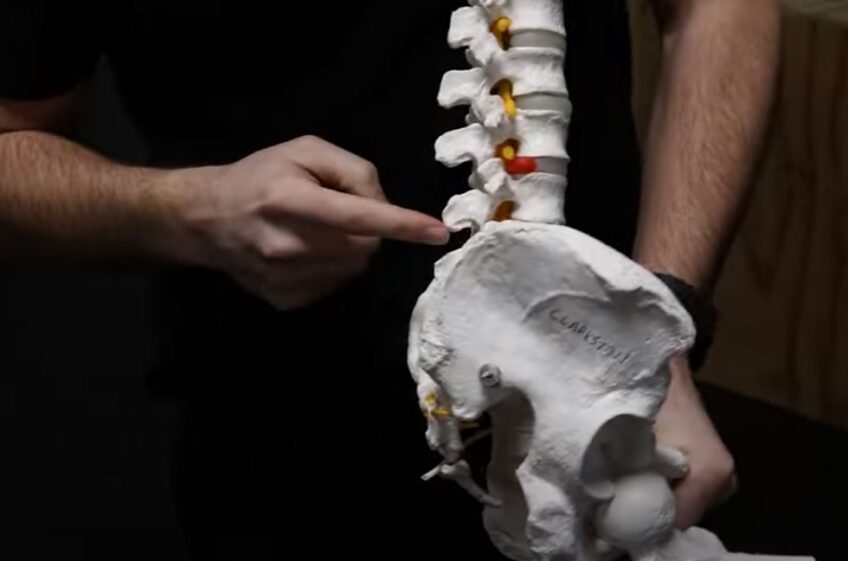
Anterolisthesis is a medical term for a spinal disorder in which the vertebra slips forward out of its alignment with the other vertebrae. This disorder, also known as spondylolisthesis, typically affects the lumbar region of the spine and may be caused by a variety of anatomical, congenital, and trauma-related injuries.
Symptoms can vary depending on the grade and location of displacement. For example, most people diagnosed with anterolisthesis will experience low back pain that may radiate to their thighs or buttocks area, difficulty walking or sitting for prolonged periods of time without pain, lower limb weakness or numbness, and an elevated resting position resulting in an uneven stance.
Treatment options usually involve anti-inflammatory medications like ibuprofen or naproxen sodium combined with physical therapy exercises tailored to reduce pressure on the affected discs. It is important to carefully consider which exercises are safe to avoid increased discomfort or worsening symptoms.
Retrolisthesis
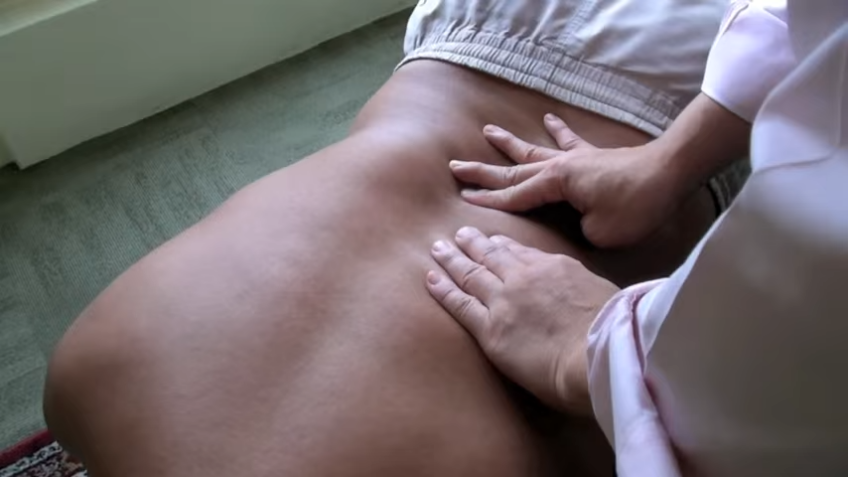
Retrolisthesis is a specific type of spondylolisthesis where the vertebral body has shifted posteriorly. In other words, it is the reverse of anterolisthesis, where the vertebral body has shifted forward. Retrolisthesis results in partial dislocation or displacement of the vertebral body from the superior to the inferior position. It most commonly affects the lumbar spine with arthritis or following trauma, resulting in compression of neural elements between two or more vertebral bodies.
Retrolisthesis is graded according to the amount of displacement, with grade 1 being up to 25 percent, grade 2 between 25 and 50 percent, and grade 3 greater than 50 percent slippage. Common symptoms as a result of retrolisthesis include pain, numbness, and weakness running down the legs on both sides due to nerve root impingement, back pain, and radiating pain in one or both hips.
Treatment options vary based on many symptoms that are associated with each individual condition and can include physical therapy exercises such as pelvic tilts, abdominal bracing exercises, trunk flexibility stretching, and strengthening exercises targeting core stability muscles such as gluteal muscles and transverse abdominal muscles.
The Importance of Exercise for Managing Spondylolisthesis: Benefits and Risks
Regular exercise is important for managing spondylolisthesis, a spinal condition that causes one vertebra to slip out of place, often leading to pain and other symptoms. While exercise can help manage the symptoms of spondylolisthesis, it is important to understand the benefits and risks associated with exercise for this condition.
Benefits of exercise for spondylolisthesis include strengthening the muscles that support the spine, improving flexibility and range of motion, and reducing pain and stiffness. Exercise can also improve posture, which can help reduce the risk of further injury and alleviate pain. Additionally, exercise can improve overall health and well-being, including cardiovascular health and mental health.
However, there are also risks associated with exercise for spondylolisthesis. Certain exercises, such as high-impact aerobics or heavy weightlifting, can put too much stress on the spine and increase the risk of injury. Additionally, poor form or overexertion during exercise can worsen the symptoms of spondylolisthesis and cause further injury.
To safely and effectively exercise with spondylolisthesis, it is important to consult with a healthcare professional. They can provide recommendations for safe exercises and modifications to exercises as needed. They can also help create a personalized exercise plan that takes into account individual needs and limitations.
It is also important to listen to your body during exercise and to avoid overexertion or exercises that cause pain. Starting with low-impact exercises and gradually increasing intensity and duration can help reduce the risk of injury and improve overall fitness.
Exercises to Avoid
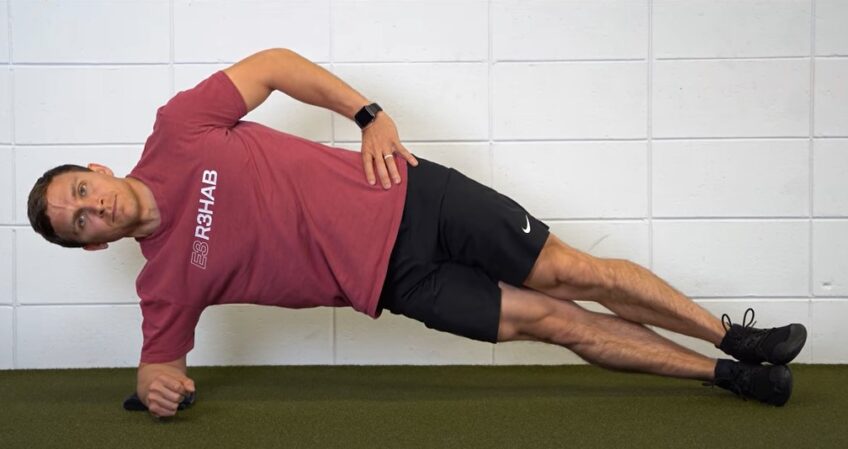
Exercising with spondylolisthesis can be a tricky proposition; certain activities can worsen the condition, while others may lessen the symptoms. Knowing which exercises to avoid is critical when dealing with spondylolisthesis.
In this section, we’ll go over what exercises should be avoided and why, as well as how to still get a good workout while avoiding aggravating the condition.
Twisting and Bending
It’s important to maintain proper posture and stay active by conducting regular spine-supporting exercises. However, there are some exercises that should be avoided due to the fact that they can strain or damage the already weakened vertebrae. This is especially true for those suffering from Grade II, Grade III, and Grade IV spondylolisthesis.
These motions cause a force on the spine which can further slip your vertebrae into an out-of-place alignment and cause serious damage in severe forms of this condition (such as Grade III or Grade IV). In order to avoid this injury, it is essential not to perform any activities that involve extreme twisting or bending of the spine while exercising.
Activities like running or jogging should also be avoided if you have spondylolisthesis. Additionally, any activities that involve repetitive motions such as golf swings or swimming laps should also be reconsidered since these motions can create added pressure on the spine. Instead of these exercises, your doctor may recommend a program of minimal impact low-impact aerobic exercises (such as biking) as an alternative for cardiovascular conditioning along with strength training for maintaining good posture.
Heavy Weight Lifting

Heavy weight lifting or resistance training with very heavy weights (such as squats, lunges, and deadlifts) is not recommended with spondylolisthesis because the intense pressure placed on the spine can cause further injury.
These exercises involve extreme flexing of your entire spine and pelvis, which can cause slipped vertebrae to move into or out of place. Even without an existing slipped vertebra, these exercises put a strain on your spine that could ultimately lead to a slip with long-term use.
To minimize the risk of injury, spondylolisthesis patients should avoid lifting objects such as barbells or dumbbells heavier than 10 pounds and should stay away from maximal lifts — moves where you strain to move the maximum amount of weight.
Safe Exercises
Safe exercises can help to reduce the pain symptoms, increase flexibility and improve overall strength, while unsafe exercises can aggravate the condition.
Therefore, it is important to understand which exercises are safe to do and which should be avoided.
Low Impact Aerobics

Low impact aerobics are a type of exercise that can help maintain cardiovascular health for individuals with spondylolisthesis. Low-impact exercises are activities that primarily use the lower body but do not require jumping, hopping or skipping which can put strain on the spine. This type of exercise is safe, effective and relatively easy on the joints. Examples include walking and swimming.
When selecting low impact aerobics for individuals with spondylolisthesis, it is important to look for exercises that incorporate multiple muscle groups while also providing a cardiovascular benefit. The focus should also be on strengthening core muscles rather than stretching them too much (which can be counterproductive). Additionally, finding an exercise that has quick transitions between moves helps to keep the intensity manageable and reduce jarring forces to the spine.
Low impact aerobics can offer several benefits for individuals with spondylolisthesis such as improved balance, posture and strength which will enable them to protect their back from further injury and encourage healing from existing damage caused by their condition. It should be noted however, each individual’s experience may vary depending on the severity and other factors so it is important to consult with your doctor or physical therapist before starting any new exercise routine.
Core Strengthening Exercises
The best way to address this condition is through a combination of rest and exercise. To strengthen the core muscles while protecting the spine from further injury, it is important to focus on core-strengthening exercises that are safe for people with spondylolisthesis.
Core strengthening exercises can help strengthen the abdomen, lower back and hips while improving posture and stability in the spinal column. These exercises may include pelvic tilts, side planks, glute bridges, dead bugs, bird dogs, supermans, hip hiking, standing reverse leg lifts, wall squats, kneeling planks, and hip thrusters. Each exercise should be performed with slow and controlled movements to allow for proper form. Moving too quickly or too forcefully could result in pain or further instability in an already weak back structure.
For individuals who are concerned about their ability to perform these exercises safely or would like to receive professional direction on specific techniques for addressing spondylolisthesis through exercise, consulting a physical therapist can provide personalized guidance to support an individual’s fitness goals.
Stretching Exercises
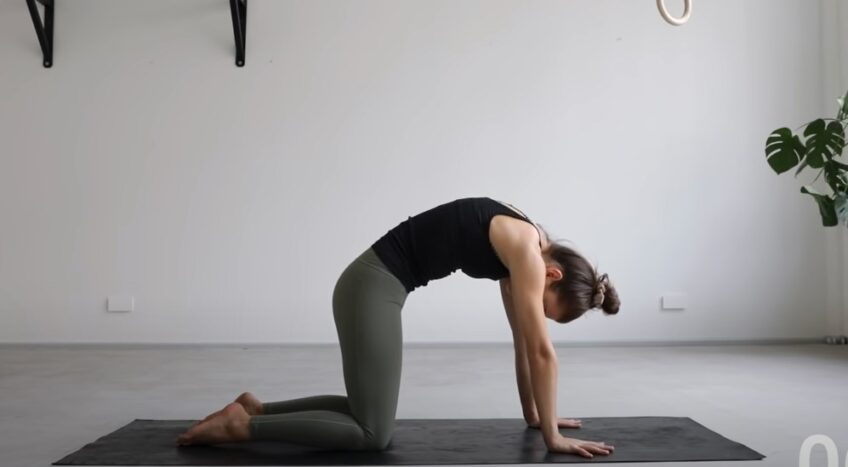
Stretches should not be painful and normally involve controllably lengthening various muscle groups or holding positions designed to improve flexibility and decrease tightness.
It is advisable to speak with a licensed physical therapist or physician before beginning any stretching program in order to ensure that it is personalized and appropriate for your condition. Several gentle stretching exercises commonly used by people with spondylolisthesis include:
-Lower Back Stretch: Lie faceup on the floor and draw both knees up towards the chest, bringing them as close as possible. Gently rock side-to-side, directionally rolling hips around in circles to provide deep massage-like relief (clockwise then counterclockwise).
-Ankle Mobility: Lying supine on the floor, bend both legs towards your body such that feet are flat against the ground and wrists are resting just below the knees. A slight pressure can be gently placed onto the outer portions of bent legs before rotating ankles clockwise/counterclockwise for 30 seconds each.
-Piriformis Stretch: Lie face up on the floor with both knees bent and feet flat against it. Cross your left ankle just above your right knee, rest your hands on either side of this leg, then draw it down with gentle tension until a stretch is felt throughout the buttock area (this can also be performed seated). Hold for at least 30 seconds before switching sides.
For deeper stretches that may increase the risk of injury for individuals with spondylolisthesis, it is strongly advised to check in with a medical professional prior to engaging in further activities such as Yoga or Pilates-based regimens.
Aquatic Therapy for Spondylolisthesis: Water Aerobics and Swimming
This type of therapy involves performing exercises in water, such as water aerobics or swimming. The buoyancy of the water helps reduce stress on the spine and joints, making it easier to move and exercise without causing pain or further injury.
Water aerobics is a low-impact exercise that can help improve cardiovascular health, increase flexibility, and strengthen the muscles that support the spine. In a water aerobics class, participants perform a series of movements in shallow water, such as jogging, jumping, and lifting weights. The water provides resistance, which helps strengthen the muscles and improve overall fitness.
Swimming is another great exercise for people with spondylolisthesis. It is a low-impact exercise that can help improve cardiovascular health, increase strength, and improve overall fitness. Swimming uses all the major muscle groups, including the back muscles, without putting too much stress on the spine. It also helps improve posture, which can help reduce pain and prevent further injury.
In addition to the physical benefits, aquatic therapy can also help improve mental health. The relaxing properties of water can help reduce stress and anxiety, which can be beneficial for people with chronic pain conditions such as spondylolisthesis.
Before starting aquatic therapy, it is important to talk to a healthcare professional to ensure it is safe for you to do so. They may also recommend modifications to certain exercises or provide specific exercises to target your individual needs. It is also important to ensure proper safety measures are taken, such as wearing appropriate footwear and using a flotation device if needed.
FAQs

Can weightlifting worsen spondylolisthesis?
Heavy weightlifting, especially exercises that involve bending or twisting the spine, can put too much stress on the back and worsen it.
Are toe touches safe for people with spondylolisthesis?
Exercises that involve bending or twisting the spine, such as toe touches, can exacerbate spondylolisthesis and cause further injury.
What are the benefits of aquatic therapy for spondylolisthesis?
Aquatic therapy provides a safe and effective way to exercise while reducing stress on the spine and joints. It can also help improve cardiovascular health, increase flexibility, and strengthen the muscles that support the spine.
How can I modify exercises to make them safer for spondylolisthesis?
Modifications to exercises can include using lighter weights, avoiding exercises that involve twisting or bending the spine, and using proper form.
Can spondylolisthesis be cured with exercise?
There is no cure for it, but regular exercise can help manage the symptoms and prevent further injury.
What is the risk of injury when exercising with spondylolisthesis?
The risk of injury when exercising with spondylolisthesis can be increased if exercises are performed incorrectly or if exercises that put too much stress on the spine are performed.
How can exercise improve posture for people with spondylolisthesis?
Regular exercise can strengthen the muscles that support the spine and improve posture, reducing pain and preventing further injury.
Are high-impact exercises safe for people with spondylolisthesis?
High-impact exercises such as running and jumping can put too much stress on the spine and increase the risk of injury, so they should be avoided.
What other lifestyle changes can help manage spondylolisthesis?
Proper nutrition, sleep, and stress management can all help manage it and improve overall health.
Can aquatic therapy help improve the mental health of people with spondylolisthesis?
Yes, the relaxing properties of water can help reduce stress and anxiety, which can be beneficial for people with chronic pain conditions such as this.
Conclusion
In conclusion, proper exercise is key when it comes to preventing further degeneration of a symptomatic or asymptomatic case of spondylolisthesis. Certain types of exercises can exacerbate existing symptoms or cause further strain to the spine. It is important to consult with a doctor or physical therapist who can evaluate your specific case and provide advice on which exercises are safe for you.
When engaging in any exercise for spondylolisthesis, the following should be considered:
- Starting with mild exercises like walking and swimming may be best for people with mild cases
- Engaging in strengthening and stretching exercises to maintain strength, flexibility, and balance in the back and abdominals
- Avoiding heavy weights, excessive twisting motions or high-impact activities
- Using proper form while exercising to ensure alignment
- Proceeding gradually while increasing intensity to prevent overworking these muscles during exercise
By implementing a well-thought-out plan that addresses individual needs through the right types of exercises outlined above, those looking for relief from spondylolisthesis will be able to move more freely without aggravating their condition.

